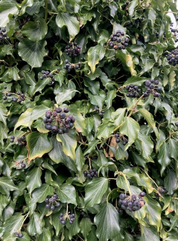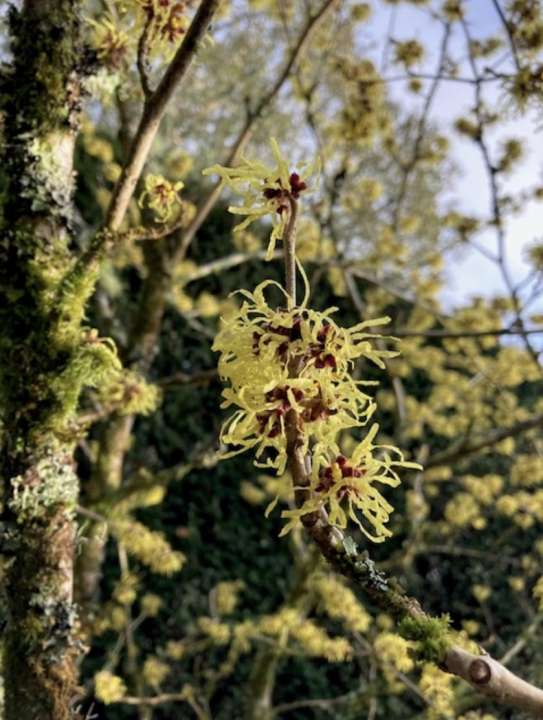
Gardening with wildlife in mind – February
Early spring flowers are starting to show, and if there is a sunny day and you venture outside, you may be rewarded with a waft of sweet scent from early flowering shrubs. One of the best, is Christmas box (Sarcococca confusa), which has been flowering since January, and you might also come across winter jasmine (Lonicera x purpusii) or a witchhazel (Hamamellis spp.) with its fluttery yellow or red flowers.

Fallen leaves which haven’t been cleared off the beds can be left to help overwinter beneficial predators such as violet ground beetles or centipedes, and hibernating toads. Although these are great around the base of shrubs, care must be taken to not bury the crowns of some herbaceous plants or any evergreen ground cover. Alpines, in particular, are at risk of dying back if swamped under leaves. A layer of leaves does also harbour slugs and snails, so care must be taken when new shoots are starting to grow from the ground to ensure that these tender new stems are not being completely munched.
Roses are best pruned in February when they start into new growth. If you didn’t pick up the fallen leaves around the base of the rose bushes before winter, then try to do it now to reduce black spot. The best thing is to put a good layer of mulch around the base of the plant too.
Ivy has berries on it which are loved by blackbirds and thrushes. The berries are the last berry of the winter for the birds and are very calorie rich. Only mature plants of English ivy – usually around 10 years old – will produce flowers and berries though, so it is not necessarily a quick wildlife fix for the garden.
There are just a few varieties of ivy which are small, shrubby (not creeping) that will flower and produce berries straight away: the plain green Hedera helix Arborescens; or variegated Hedera helix ‘Ice Cream’ or ‘Cavendishii Latina’.
If you’re wondering how to get rid of Ivy for good, it can be done. However, we would also ask you to rethink getting
Welcome to the March edition of our gardening guide! As the embrace of winter loosens its grip, our gardens come alive with the promise
In the world of indoor gardening, the topic of cutting or pruning houseplants often raises questions and uncertainties. Do our leafy companions truly benefit
Embark on a journey into the captivating world of cacti and succulents, where resilience meets beauty in the most extraordinary way. These unique plants,
Welcome to the February edition of our gardening guide! As winter’s grip begins to loosen, our gardens awaken with the promise of a new
Discover the wonders of gardening in winter, a season of tranquillity and growth amidst frost-kissed landscapes. Winter, often associated with dormancy and barrenness, may seem
The Otter Nursery
Murray Road
Ottershaw
Surrey
KT16 0HT